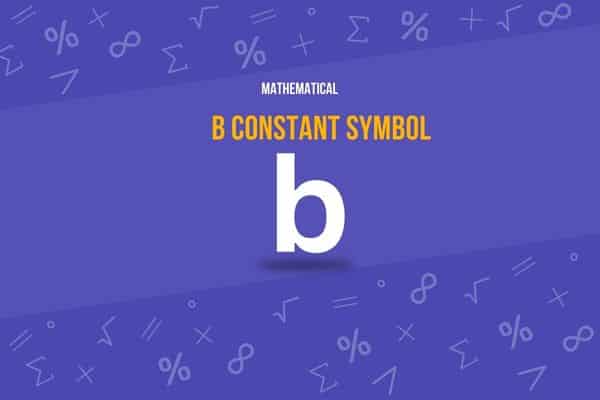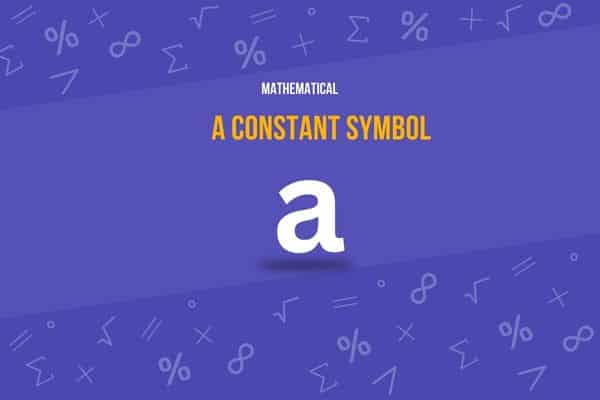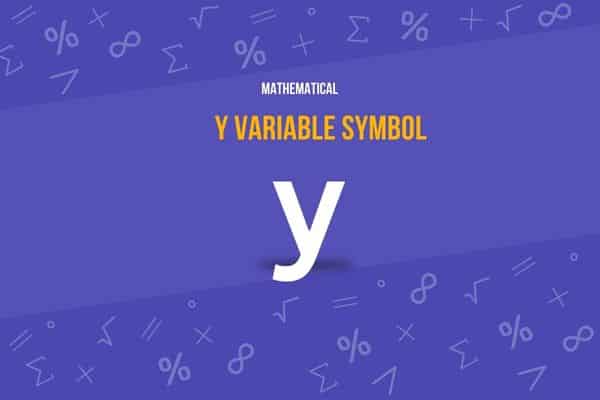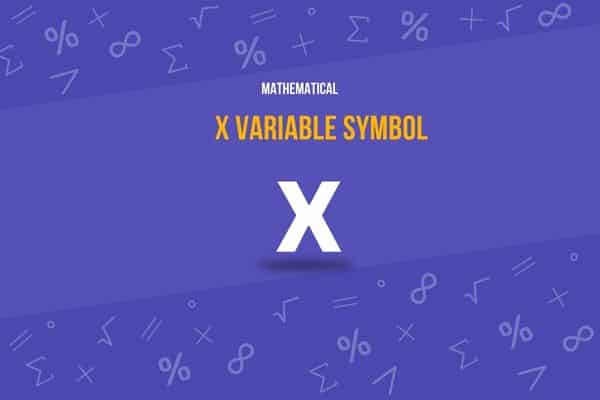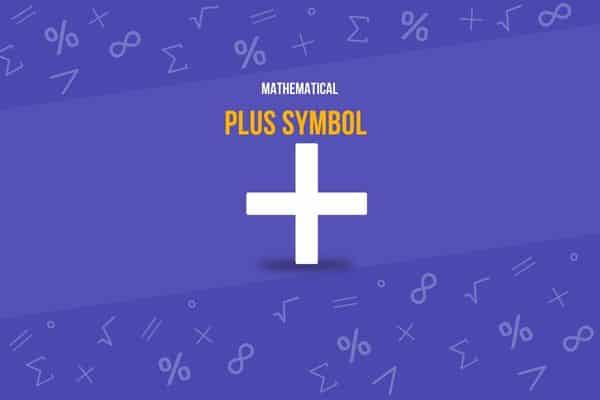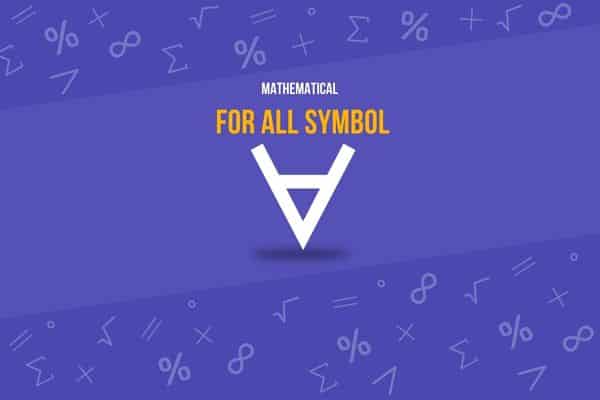What is the Backslash Symbol?
Are you curious about the backslash symbol and its role in modern technology? Understanding this symbol’s function could enhance your technical skills, whether you’re a programmer, student, or tech-savvy.
This article will overview the backslash symbol’s history, significance, and various applications across different platforms. By reading on, you’ll gain practical insights into how this essential punctuation mark shapes our interaction with computers and coding languages.
Continue reading to uncover the full story of the backslash symbol—let’s ensure you have the knowledge to use it effectively!
Let’s get started!
Fast Facts
\
Backslash Symbol
Backslash Symbol (\) Overview
Here’s a detailed table that provides comprehensive information about the Backslash Symbol ():
| Attribute | Details |
|---|---|
| Symbol Name | Backslash |
| Unicode | U+005C |
| Image | \ |
| Brief Description | A typographic symbol used primarily to denote escape sequences in programming and file paths in computing. |
| Unicode Version and Date of this Version | Unicode 1.1.0, released in June 1993 |
| Unicode Block Name | Basic Latin |
| Plane | BMP (Basic Multilingual Plane) |
| Script | Common |
| Category | Punctuation, Other (Po) |
| Bidirectional Class | Common Separator (CS) |
| Combining Class | 0 (Spacing, split, enclosing, reordrant, and Tibetan subjoined) |
| Character is Mirrored | No |
| HTML Entity | \ or \ |
| CSS | \005C |
| UTF-8 Encoding | 5C |
| UTF-16 Encoding | 005C |
| UTF-32 Encoding | 0000005C |
Here’s What You Will Find
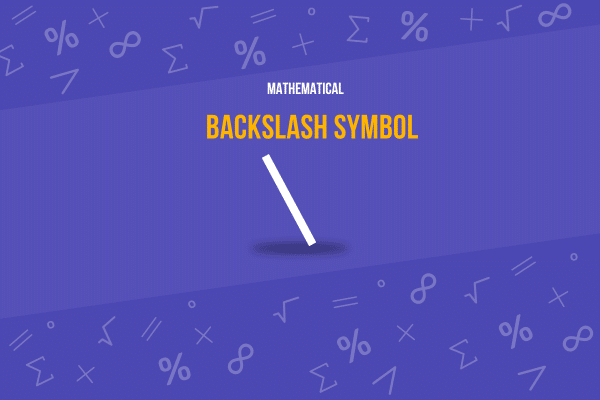
Backslash Symbol
The backslash symbol (\) is a unique character found on almost all keyboards. It has a variety of uses across several domains, most notably in computing and programming. For example, in many programming languages, the backslash is used as an escape character, allowing developers to include special characters in a string. Paths for file systems, particularly in Windows operating systems, denote the separation between folders.
Despite its common appearance, the average computer user often overlooks or misunderstands the backslash’s functionality. The backslash is a versatile tool that plays an instrumental role in our digital world.
Other Names
The backslash symbol is not known by one name but several based on its usage and cultural context. In computing, it is commonly called the “escape character,” especially in programming languages where it precedes special or reserved characters to signal their literal interpretation. For file paths, particularly in Windows operating systems, it is often called a “directory separator.”
Informally, it is sometimes called a “reverse slash,” distinguishing it from the more common forward-slash (“/”). Despite the various names, each term points to the same unique and indispensable character – the backslash.
Backslash Symbol Meaning
The backslash symbol () is a typographic character widely used in computer science, mathematics, and textual markup languages.
In mathematics, it occasionally functions as a symbol to denote set complements, distinguishing elements not part of a subset.
More commonly, the backslash is essential as an escape character in computing, allowing special characters to be included in string literals and commands. For instance, it precedes characters like ‘n’ to represent a new line or ‘t’ for a tab.
Furthermore, in textual markup languages and programming, the backslash helps delineate commands or modify the default behavior of subsequent characters, showcasing its versatility as both a functional and mathematical symbol.
Did You Know?
The backslash didn’t even exist on typewriter keys until the introduction of computers.
A backslash is often used as an escape character in computer programming. An escape character is a character that invokes an alternative interpretation on the following characters in a character sequence. For instance, if you wanted to include a quotation mark inside a string in many programming languages (like Python or Java), you could use a backslash before the quotation mark (\”) to indicate that the quotation mark is part of the string, not the end of the string.
A backslash is used as a directory separator in file system paths, particularly in Windows. For example, to specify the path to a file located in a subdirectory, you might write something like C:\Users\Username\Documents\file.txt, where each backslash indicates a new subdirectory.
In mathematics, the backslash denotes set differences or relative complements. If we have two sets, A and B, the expression A\B means “the set of all elements that are in A but not in B.”
The backslash is vital in textual markup languages like LaTeX and Markdown. In LaTeX, it is used to indicate a command. For example, \textbf{bold text} would render the text in bold. In Markdown, it allows the usage of characters that would otherwise be interpreted as syntax.
In Regular Expressions (RegEx), the backslash is used to escape special characters, forcing them to be interpreted literally. For instance, is used to match a period, which would otherwise be interpreted as any character due to the special nature of the period in RegEx.
The backslash is a powerful and versatile character that enables specific and complex computing, mathematics, and textual markup operations. Its function changes based on the context in which it’s used, making it a significant tool in various domains.
Backslash Symbol Unicode
Unicode is a universal character encoding standard that facilitates the consistent representation and handling of text expressed in most of the world’s writing systems. It is designed to include all characters and symbols from all scripts around the globe, providing a unique number for each character, no matter the platform, device, application, or language.
This allows for interoperability and helps maintain data integrity when transferring it across different systems. The backslash symbol is no exception to this comprehensive system. Its Unicode is U+005C, allowing it to be uniquely identified and used across various digital platforms and applications.
Backslash Symbol Uses
The backslash () is a versatile character with many uses across different domains, such as mathematics, file systems, programming, text markup, etc.
The backslash symbol is more than just a simple mark on your keyboard; it plays a pivotal role in various technical and textual environments. Its functionality extends beyond ordinary punctuation, providing critical programming, file management, and data processing support.
Let’s explore some of the primary uses of the backslash symbol:
- Escape Character in Programming: The backslash is used as an escape character in many programming languages. It allows programmers to insert special characters into strings. For example, \n represents a newline and
\tstands for a tab. This use is crucial for writing clear and functional code in languages like Python, Java, and C++. - File Paths on Windows Systems: The backslash is the default directory separator on Windows operating systems. When navigating or specifying file locations, the backslash is used, such as in
C:\Program Files\YourApplication. - Regular Expressions: In regular expressions, a backslash is used to escape special characters, enabling these characters to be treated as literals rather than as special commands. For instance,
\.would be used to find an actual period in a text, differentiating it from its function as a wildcard character. - LaTeX Commands: In the LaTeX typesetting system, the backslash begins commands that perform specific typesetting tasks. For example,
\textbf{Text}would make “Text” appear bold. - Network Resource Paths: In networking, backslashes precede the name of a computer and shared resource. For example,
\\ServerName\SharedFolderaccesses a shared folder on a specified server. - Mathematics: Although less common, in mathematical notation, particularly in set theory, the backslash is used to denote the set difference operation, showing what is unique to one set in comparison to another.
Each of these applications highlights the backslash’s fundamental role across different platforms and disciplines, proving that this symbol is indispensable in both everyday computing and specialized technical tasks.
In mathematical notation, it denotes set difference or relative complement, as in AB representing elements in set A but not in B. In file systems, particularly Windows, the backslash is a separator for folder and file names (e.g., C: UsersUsernameDocumentsfile.txt).
Regarding programming languages such as Python, Java, and JavaScript, it’s employed as an escape character for denoting special characters (\n for a new line, \t for a tab, \” for a double quote within a string, etc.). In Regular Expressions (RegEx), a backslash is used to escape special characters, ensuring they’re treated rather than as control characters.
Moving to text markup languages like LaTeX and Markdown, the backslash is also heavily used. In LaTeX, it precedes commands, while in Markdown, it is used to escape special characters that otherwise have a syntactical function. This wide range of uses highlights the backslash’s significance in computer science, mathematics, and textual representation.
Backslash Symbol Examples
Let’s explore the uses of the backslash symbol in various scenarios.
The backslash symbol is integral to many technical and daily operations, serving diverse purposes from computing to text formatting. Here are some practical examples that illustrate the varied applications of the backslash:
- Escape Sequences in Programming: In many programming languages, the backslash allows for the inclusion of special characters within strings. For example:
print("Line1\\nLine2")outputs two lines by using\nto insert a newline.print("She said, \"Hello, world!\"")uses\"to include double quotes inside the string.- Windows File Path: In Microsoft Windows, the backslash is used to separate directories in file paths, a critical element for file management. An example path might look like this:
C:\Users\Username\Documents\file.txt- Regular Expressions: The backslash is used to escape special characters in regex, allowing those characters to be used in searches. For example:
- The regex pattern
\dmatches any digit, effectively shorthand for[0-9]. - Network Paths: When accessing shared folders or resources in a network environment, the backslash designates paths and resource names:
\\NetworkServer\SharedDrive\PublicDocuments- LaTeX Document Commands: In LaTeX, a backslash is used to introduce commands that modify the text or layout. Common commands include:
\begin{itemize}to start a bulleted list and\end{itemize}to end it.\textit{italicized text}to produce italicized text.- Set Theory in Mathematics: The backslash in set theory signifies the difference between two sets, indicating elements present in one set but not in another:
- If
A = {1, 2, 3}andB = {3, 4, 5}, thenA \ B = {1, 2}.
In coding languages like Python and JavaScript, text with quotation marks like “John’s tractor” would have to be written as “John\’s Tractor” for the languages to correctly write the single quotes. Similarly, the backslash symbol can also be used to write characters with Unicode, such as in the line print('\u0030'), which prints the character “0” in Python.
These examples demonstrate the backslash’s flexibility and essential function in various contexts, emphasizing its importance in both simple and complex tasks across different fields.
Why is the Backslash Symbol Important?
The backslash symbol is of paramount importance in the digital world. It plays a crucial role as an escape character in various programming and scripting languages, allowing for the inclusion of special characters in strings and facilitating control sequences like line breaks or tabs. In addition, its use as a directory separator in Windows file paths helps organize and access files effectively.
The backslash also comes into play in network paths and regular expressions, aiding communication between systems and pattern recognition. Numerous coding, computing, and navigational tasks would be exponentially more complex without this versatile character.
Backslash Symbol History
The history of the backslash symbol is intertwined with the evolution of computer technology. This character was introduced in ASCII (American Standard Code for Information Interchange) in the early 1960s as a character that was unlikely to be used in normal text, making it suitable for specialized functions. Bob Bemer, a notable computer scientist, is often credited with its creation.
He introduced the backslash as an escape character to the programming world, making it possible to introduce special character functions, thereby expanding the capabilities of coding languages.
Over the years, the backslash has found its place in various tech applications, from directory paths in Windows operating systems to its key role in scripting languages and regular expressions. While often overlooked, the backslash symbol carries a rich history as an essential tool in advancing digital technology.
Backslash Symbol Origins
The backslash was designed to fill the need for an escape character, a tool to denote actions or interpret special characters within text strings. Its design, a mirror image of the regular slash, was chosen to minimize its likelihood of appearing in everyday text, ensuring it would primarily serve as a specialist character within programming and computer applications.
While the backslash may seem like a simple keystroke, its origin story underscores its importance to the foundations of computer science.
Evolution of the Backslash Symbol
While the backslash’s design has remained largely consistent since its introduction in the ’60s, its applications have expanded and evolved over time with advances in computer technology.
Initially introduced as an escape character, its use has grown beyond this role. Today, it is crucial to represent file paths in Windows operating systems, network paths, and regular expressions for pattern matching in programming. In the information age, symbols started to be used to create emoticons (character-based facial expressions).
While the symbol has remained the same, the backslash’s functionality and importance in computing have significantly evolved over the years.
Backslash Symbol In Everyday Life
In reflecting on the backslash symbol, it’s intriguing to consider its hidden significance that often goes unnoticed daily. This simple character embodies the principle of versatility – just as it wears many hats in the digital world, from serving as an escape character to denoting directory paths, we, too, can aspire to be adaptable in various situations in life.
For instance, just as the backslash makes things clearer in programming by creating separations or marking special sequences, we can strive to bring clarity and organization into our routines. This might mean categorizing tasks for better time management or separating work and personal life for a healthier balance.
Additionally, the backslash’s use in denoting alternate pathways, as in file directories, can inspire us to be open to different routes and possibilities in our personal and professional journeys. The humble backslash reminds us of the power of adaptability, clarity, and openness to change, which can enrich our daily routines.
Last Thoughts
The backslash symbol is a fascinating character that embodies versatility, adaptability, and a rich legacy rooted in computer science history. Its quiet presence on our keyboards belies a powerful and expansive range of functions in the digital world.
As you’ve journeyed with us through the world of the backslash, we hope this deeper understanding helps you appreciate this symbol and its multifaceted role in our everyday lives.
Before You Go
Don’t stop at the backslash; there’s a world of symbols out there, each with its unique history, meaning, and uses just waiting to be discovered. Continue your journey and explore them all.
If you found this exploration of the backslash symbol intriguing and useful, consider sharing it with friends, colleagues, or anyone who might benefit from understanding its diverse applications. Spreading this knowledge can enhance others’ technical skills and clarify misunderstandings about this often overlooked but crucial character. Sharing this post is a great way to foster a deeper appreciation for the subtleties of programming and computing in your network!

